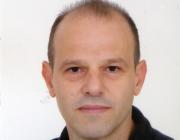Abstract:
Active recovery reduces blood lactate concentration faster than passive recovery and, when the proper intensity is applied, a positive effect on performance is expected. The purpose of the study was to investigate the effect of different intensities of active recovery on performance during repeated sprint swimming. Nine male well-trained swimmers performed 8 repetitions of 25 m sprints (8 ± 25 m) interspersed with 45 s intervals, followed by a 50 m sprint test 6 min later. During the 45 s and 6 min interval periods, swimmers either rested passively (PAS) or swam at an intensity corresponding to 50% (ACT60) and 60% (ACT60) of their individual 100 m velocity. Blood lactate was higher during PAS compared with ACT50 and ACT60 trials (p < 0.05), whereas plasma ammonia and glycerol concentration were not different between trials (p > 0.05). Mean performance time for the 8 × 25 m sprints was better in the PAS compared with the ACT50 and ACT60 trials (PAS: 13.10 ± 0.07 vs. ACT50: 13.43 ± 0.10 and ACT60: 13.47 ± 0.10s, p < 0.05). The first 25 m sprint was not different across trials (p > 0.05), but performance decreased after sprint 2 during active recovery trials (ACT50 and ACT60) compared with the passive recovery (PAS) trial (p < 0.05). Performance time for the 50 m sprint performed 6 min after the 8 ± 25 m sprints was no different between trials (p > 0.05). These results indicate that active recovery at intensities corresponding to 50% and 60% of the 100 m velocity during repeated swimming sprints decreases performance. Active recovery reduces blood lactate concentration, but does not affect performance on a 50 m sprint when 6 min recovery is provided. Passive recovery is advised during short-interval repeated sprint training in well-trained swimmers. © 2006 NRC Canada.
Notes:
cited By 18
Website

